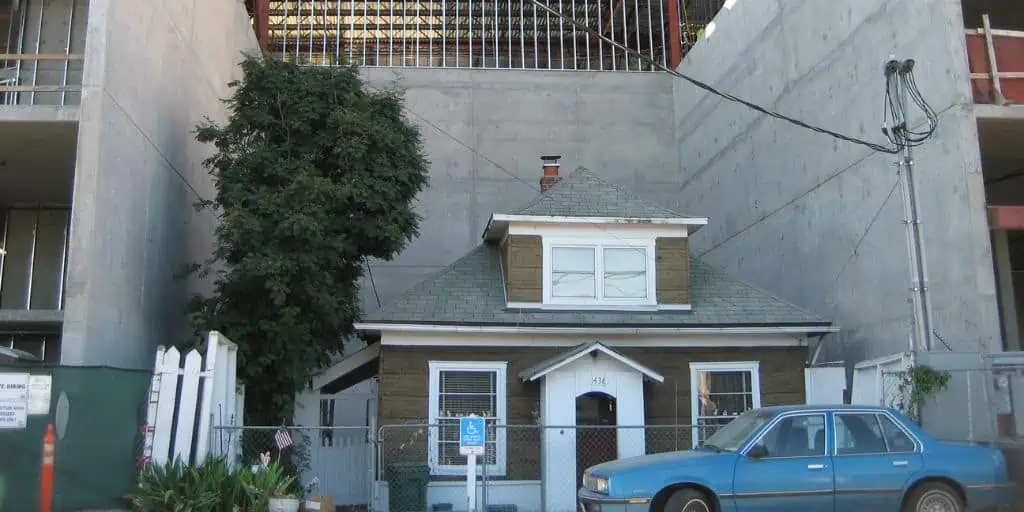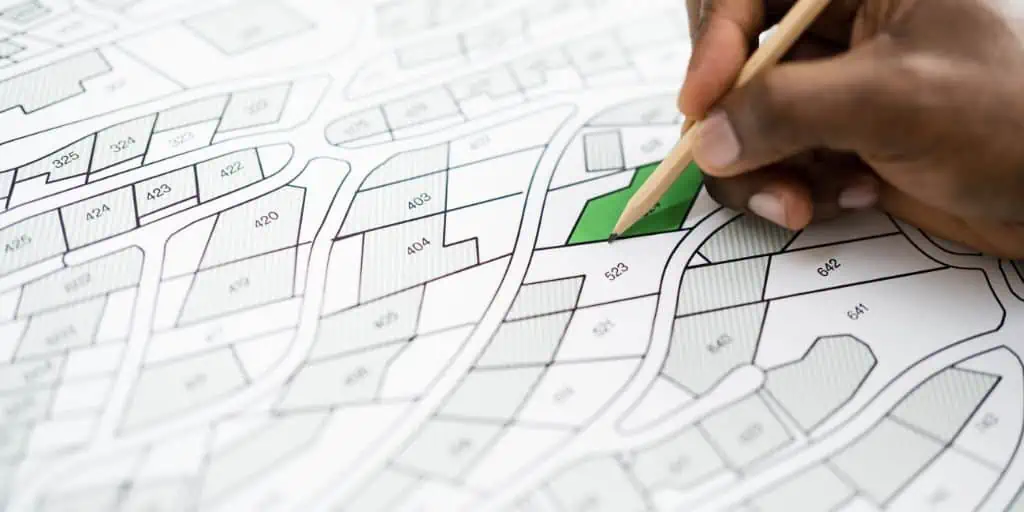What Is a Zoning Variance?
REtipster does not provide legal advice. The information in this article can be impacted by many unique variables. Always consult with a qualified legal professional before taking action.
Shortcuts
- A zoning variance allows a landowner to use their land in a way not normally permitted by the zoning ordinance.
- Building a house with more square footage than zoning permits is an example of a zoning variance.
- When you request a variance, you must present a convincing case explaining why the exception wouldn’t negatively impact the general public.
- Unlike a variance, a non-conforming use shields you from adjusting your property to new zoning rules.
- Opponents of zoning variances often argue that these exceptions can decrease property values and affect residents’ quality of life.
Zoning Variances Explained
A zoning variance is a deviation from the set of rules a municipality applies to land use and land development, typically known as the zoning ordinances. The variance allows a landowner to use their land in a way that is not normally permitted by the zoning ordinance. It’s generally granted when strict enforcement of the law would cause unnecessary hardship due to the particular physical surroundings, shape, or topographical conditions of the property involved.
For instance, a landowner might request a zoning variance to build a shed in their backyard that is closer to the property line than allowed by the zoning regulations. The local zoning board would then review the request and make a decision based on the unique circumstances.
However, it’s important to note that zoning variances are not intended to allow landowners to merely circumvent zoning regulations for their convenience. They’re meant to remedy issues that create an exceptional hardship or practical difficulty, which are not self-imposed and are unique to the property, not shared by neighboring properties in the same zone.
Different types of zoning variances include:
- Area Variance: This is typically requested when a property owner wants to violate an ordinance pertaining to dimensional or physical requirements. For example, a homeowner might ask for an area variance to build a two-car garage when the maximum allowed size is for a one-car garage.
- Use Variance: This type of variance allows for a use that is not otherwise allowed in a zoning district. For instance, a property owner might request a use variance to operate a small retail store in a residential zone. Use variances are generally more difficult to obtain because they can change the character of a neighborhood more significantly than an area variance.
It’s worth mentioning that the process and standards for granting a variance can vary by jurisdiction, as can the terminology used. The two types described above are commonly recognized categories but some places may have more specific types or use different terms altogether.
How Do Zoning Variances Work?
Zoning variances work like special permissions for using your property in a way that goes against the normal rules for your property or your area. You typically submit it to your local planning and zoning department[1].
Here’s how it works:
- Fill out an application: You need to fill out a form and write a letter explaining why you need the variance. You also have to pay a fee.
- Explain your situation: In your letter, you should mention the specific rule causing a problem for you. Explain why your situation is unique and why your request wouldn’t cause any harm to others.
- Review and investigation: The zoning authority will review your application and may talk to your neighbors or others who might be affected. They might even ask the city council for their opinion.
- Approval or rejection: If they approve your request, you get permission to do what you asked for. Otherwise, you can appeal and ask for another chance. This may involve a meeting where people in your community can share their thoughts. If you get rejected for a second time, you may have to wait a certain period before resubmitting your application.
- Follow the rules: If you do get a variance, it doesn’t change the rules for everyone else, only for you. Note that if you sell your property, the new owner may not have the special permission you received unless they apply for it too.
Some variance applications come with time limits, so you have to act on the changes you want within a certain period.
That said, the process of obtaining a zoning variance can vary depending on local regulations and specific circumstances. Consult your relevant local zoning authority or seek legal advice to understand the specific requirements and procedures in your area.
Zone Variance Examples
A good example of a zoning variance is when someone wants to build an industrial facility in an area meant for farming.
In residential areas, here are some common variances:
- Building a house bigger than the usual limits[2].
- Putting up fences when they’re not normally allowed.
- Getting around setback rules (referring to how far a building should be from the property line)[3].
- Converting a single-family residence into a multi-family property.
- Starting a business right in the middle of a neighborhood.

In Japan, it’s common to have shops like these right on top of or near residential areas, but not in the United States.
Area Variance vs. Use Variance
There are two types of variances: area variances and use variances. Area variances change how a property looks, while use variances change how it’s used.
Homeowners often ask for area variances, which are more likely to be approved than use variances. Meanwhile, real estate investors, developers[4], and other property owners may request use variances (mostly to increase the value of real estate). Note that these requests aren’t mutually exclusive.
Still, the likelihood of approval for variances can vary depending on many factors, including the situation and the zoning regulations of the jurisdiction.
RELATED: 13 Cheap and Easy Ways to Significantly Increase Land Value
Variance vs. Non-Conforming Use
The main difference between a variance and a non-conforming use lies in their nature and legal implications.

Edith Macefield’s house in Seattle, the inspiration for the Pixar movie “Up.” (by Ben Tesch, CC BY 2.0, via Wikimedia Commons)
A variance is a permission to deviate from zoning regulations, while non-conforming real estate is property that doesn’t comply with current zoning but is allowed to continue because it existed before the new rules were established.
However, non-conforming use won’t last forever. Eventually, the local authorities may ask for compliance under certain circumstances or until the owner abandons the property[5]. Additionally, if it gets seriously damaged, the property may not be reconstructed.
Non-conforming use primarily benefits the property owner by allowing them to continue using the property in a way that doesn’t comply with current zoning regulations. The owner doesn’t have to change things to match the new rules, and the government doesn’t have to force them to do it[6].
When Do You Need a Variance?
You need a variance when you want to build a house or start a business that goes against local zoning rules.
Local policymakers use zoning to shape the community in a certain way and by considering what’s best for the greater public[7]. Zoning enforces consistent rules for everyone, so exceptions are only given when there is a strong reason for it.
Zoning variances are not very common because they are special permissions that are only granted in certain situations. However, the chances of getting a variance depends on the specific situation and the rules of the area where you live.
Applying for a variance should only be done when you have a good and convincing reason. Otherwise, it may not only affect your relationship with your neighbors but also result in your variance request being rejected in the end.
Arguments Against Zoning Variance
There are valid concerns and arguments against zoning variance requests. Here are a couple of important ones:
Reduced Property Values
Zoning regulations aim to maintain property values, and zoning variances may lead to a long-term decrease in property values.
Since zoning controls the location, type, and design of buildings, it creates a uniform, desirable community for potential residents[8]. For example, a house situated between two other houses may be more appealing to buyers and command higher prices compared to a house located near a gas station[9].
Note that the overall effect on property values may vary depending on the specific circumstances and the nature of the variance.
Impact on Quality of Life
Zoning exceptions can impact the quality of life for local residents.
For instance, granting land entitlement for an industrial project in an agricultural zone could reduce soil fertility, lower food production, and negatively affect farmers and livestock raisers.
It’s crucial to consider how a variance request might impact the community as a whole. If it harms others more than it benefits the applicant, there’s likely to be strong opposition to the request.
Sources
- Zoning Board Basics. (n.d.) Land Use Training & Resources – UW – Madison Division of Extension. Retrieved from https://fyi.extension.wisc.edu/landusetraining/zoning-board-basics/
- McCollum, N. (2019, December 9.) 5 Construction Laws to Know Before You Build a House. This Old House. Retrieved from https://www.thisoldhouse.com/home-finances/21097121/5-common-construction-laws-you-should-know-before-you-build
- Dale, T. (2021, August 20.) Setback Requirements: 7 Things All Homeowners Should Know. Bob Vila. Retrieved from https://www.bobvila.com/articles/setback-requirements/
- Ceizyk, D. (2022, July 13.) How to Become a Real Estate Developer. LendingTree. Retrieved from https://www.lendingtree.com/home/mortgage/how-to-become-a-real-estate-developer/
- Shore, A. (n.d.) Why Do Properties Become Abandoned. dronegenuity. Retrieved from https://www.dronegenuity.com/why-properties-become-abandoned/
- Beck, R. (2022, October 28.) Condemnation: what it means in real estate. Bankrate. Retrieved from https://www.bankrate.com/real-estate/condemnation-real-estate-definition/
- Glock, J. (2022, November 20.) Two Cheers for Zoning. American Affairs Journal. Retrieved from https://americanaffairsjournal.org/2022/11/two-cheers-for-zoning/
- Gallagher, M. (2012, November 10.) How Can Zoning Protect Land Values? SF Gate. Retrieved from https://homeguides.sfgate.com/can-zoning-protect-land-values-51727.html
- How To Stop Poorly-Planned Gas Stations & Convenience Stores. (2022, October 2.) Community & Environmental Defense Services. Retrieved from https://ceds.org/gasstation/








